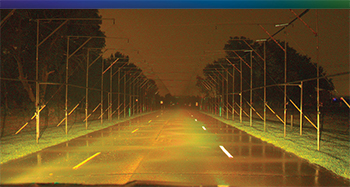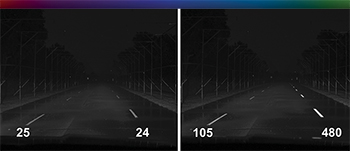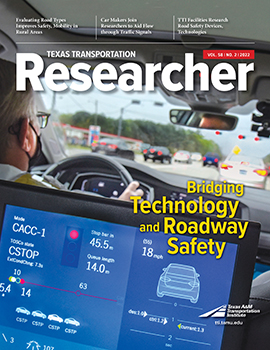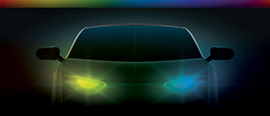Seeing the road is an essential component of safe driving. Drivers depend on a continuous flow of information as they move along the roadway to properly position their vehicle. Centerline and edge-line markings delineate the vehicle lane for drivers, while other markings such as stop bars and railway crossings provide key safety information and alert drivers about the conditions ahead.

During the daytime and in clear weather conditions, these roadway markings typically provide adequate delineation that road users can follow. However, these same markings need to be readily visible to drivers at night and in adverse weather conditions (e.g., rain) — especially in areas with little or no road lighting — to keep drivers safe. Wet-night conditions considerably reduce the performance of roadway markings and increase the risk of run-off-the-road crashes.
The Texas A&M Transportation Institute (TTI) completed the research project Pavement Markings — Wet Retroreflectivity Standards. Led by TTI Signs and Markings Program Manager and Associate Research Engineer Adam Pike, the project was sponsored by the Local Road Research Board and the Minnesota Department of Transportation (MnDOT).
The project’s main objective was to establish quantitative performance standards for pavement marking wet retroreflectivity. To do so, researchers also needed to determine drivers’ visibility needs (i.e., the minimum pavement marking brightness drivers need to see markings in wet-night conditions). Researchers conducted the following investigations:
- a comprehensive review of past literature,
- a human factors study,
- photometric measurements of pavement marking samples, and
- a comparison of driver visibility needs to the collected human factors data and to data from the literature.
The human factors study included 43 participants — with an average age of approximately 60 years old — from the general population. Each participant was tasked with evaluating the quality of pavement markings in simulated rain and dry conditions on a closed-course test track in Minnesota. Researchers then used retroreflectometers and imaging colorimeters to measure the reflectivity of the observed pavement marking samples. The coefficient of retroreflected luminance, expressed as millicandelas per square meter per lux (mcd/m2/lux) (i.e., how much light will be reflected at a given illuminance), and observed marking luminance (mcd/m2) were evaluated.

Researchers determined that pavement markings must have at least a continuous retroreflectivity level of 50 mcd/m2/lux to be adequately visible in wet-night conditions. For newer markings, researchers determined an initial value of 200 mcd/m2/lux should be used to obtain an average lifespan of four years before degrading to the minimum level.
“Ensuring drivers can see roadway markings both during the day and at night — regardless of weather conditions — is critical to keeping our roadway users safe,” says Pike. “Establishing these performance standards can help inform agencies to ensure that adequate pavement marking visibility is provided through routine maintenance.”
Pike notes, “Recommendations from this project should result in improved wet-night visibility of pavement markings, both initially and over the life cycle of the markings, leading to fewer wet-night crashes and increased driver comfort.”
The findings from this study provide MnDOT with critical guidance for pavement markings that will be included in the department’s standards and specifications for roadway pavement markings moving forward.
“MnDOT’s goal — as stated in the MnDOT Provisions for Pavement Marking Operations Technical Memorandum — is to provide an appropriate pavement marking on all state trunk highways, 365 days a year,” says Ethan Peterson, state pavement marking and crashworthy engineer at MnDOT. “This is always a challenge with inclement weather. It’s with that goal in mind I believe MnDOT’s newly established specifications will help the traveling public more safely navigate Minnesota’s roadways.”

